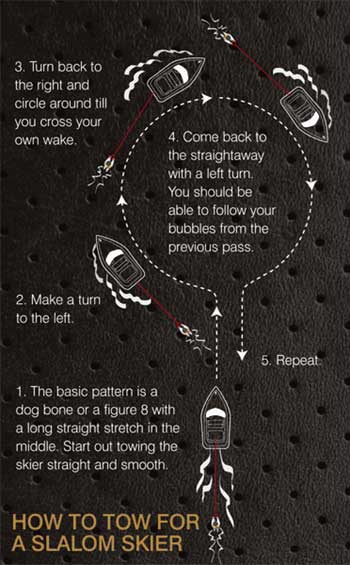Advertisement
Here are a few tips for pulling a slalom skier on a public lake. The goal is to be safe, have fun, and maximize the smooth water.
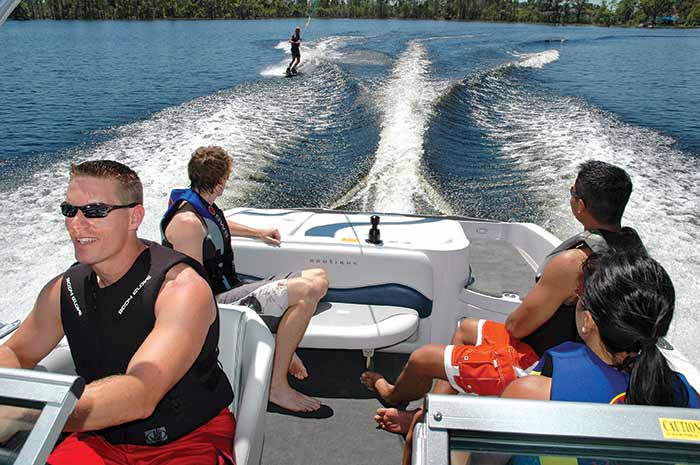
You need at least three people to go waterskiing — the driver, the spotter, and the skier. Make sure your spotter and your skier know all of the signals (see below). In most states, you also need an orange flag to hold up to signify to other boaters that you have a fallen skier in the water.
- Set the desired rope length always making sure to use a tow rope that is designed for skiing. Most people start at 15 feet off (the red section), but you can also start at Long Line (75-foot rope.) As the skier progresses, you can shorten the line to make running the slalom course more difficult.
- Have the skier put on his ski on the swim platform; let the fin hang off the side to prevent damage to the boat and the fin. Keep the engine off until the skier has jumped in the water and pushed away from the boat to avoid carbon monoxide poisoning. Ask, "Clear?" to make sure the skier is away from the propeller before you start the engine.
How To Read The Signals
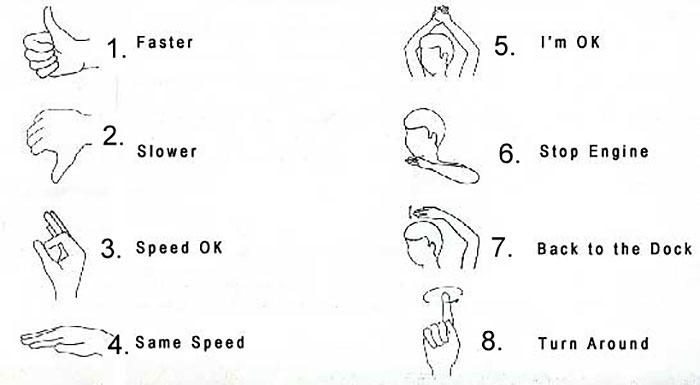
Before you leave the dock, make sure the skier and spotter know the hand signals for speed up or down, fallen skier, head back to the dock, pull out, etc.
- Idle away from the skier until the rope is tight. Take it in and out of gear to avoid jerking the handle out of the skier's hands. When the skier yells, "Hit it!" put the boat in idle and then throttle up.
- When you pull a skier out of the water, gently push the throttle forward. You do not need to slam it into gear. Keep an eye on the skier in the rearview mirror; as soon as the skier is on plane, gently pull back on the throttle to the desired speed.
- The speed should be determined by weight and ability level of the skier; beginners and children should be towed at slower speeds. The maximum speed (in competition) for men under 35 years old is 36 mph; the maximum speed for men over 35 years old and women is 34 mph.
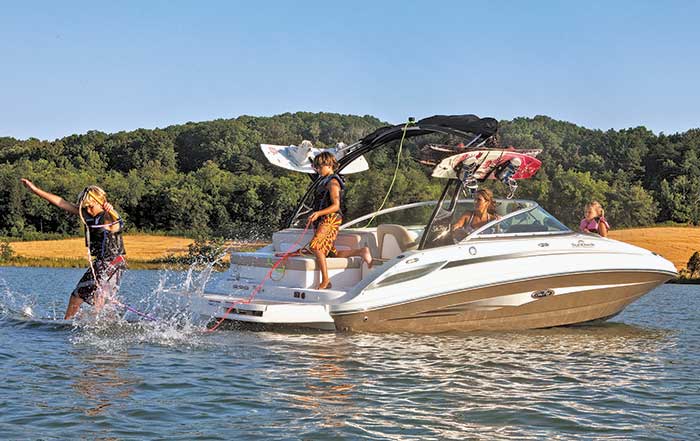
- If possible, choose a straight line for your boat path. Keep your right hand on or near the throttle. Rest your left elbow on your left knee and hold the bottom of the steering wheel with your left hand. This body position will prevent you from oversteering the skier. Use a point on the shoreline as a reference to help you steer the boat in a straight line.
- The boat path should resemble a figure 8 with a long straight line in the middle. When it is time to turn around, steer to the left, then make a right-hand turn. You will cross over your own boat wake and then return to your exact boat path ... just follow the bubbles. This boat path will allow your boat wake to wash away from the skier and provide smooth water on the pass back.
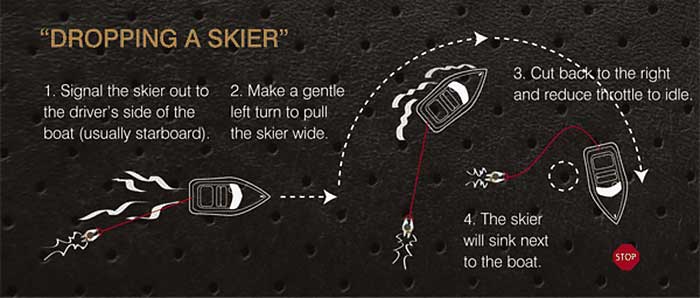
- If the skier falls during the run, slowly pull back on the throttle but continue going straight until you've come to idle speed. It is dangerous for the passengers in the boat if you pull back and make a quick turn. Make a slow turn to the right, to avoid sending a big wave down the lake, taking the boat in and out of gear. Remember, one of the goals is to keep the water smooth for the skier. Show an orange flag to notify other boaters that you have a skier down in the water. Idle back to the skier and come up beside him on the driver's side. Make a slow turn around the skier so that the rope is guided into their hands. Align the boat back into your original boat path and then wait for the skier to say, "Hit it!"
- When the skier signals "Cut it" or "Head back to the dock," you know they are done with their set. Always direct the skier to pull out to the driver's side of the boat when stopping to rest or shortening the line. This is a tricky skill to learn, but once you figure it out, you'll feel like a pro! Point the skier out to the starboard side of the boat; once they have pulled to the right side of the wake, make a gentle turn to the left, sending the skier further to the right, and then pull back on the throttle to a stop. Once the skier starts to sink into the water, you can make a right turn coming around the skier. This way the skier can hold on to the handle and just take a break. Or you can pull up to the skier on the driver side to pick him up. Be sure to turn off the engine before the skier climbs onboard.
- Good boating etiquette is always appreciated by your fellow skiers. You can be helpful by staying away from other boats or the slalom course while your peers are skiing. Smooth water is as precious as gold to slalom skiers and a good boat driver can maximize quality water conditions.
We hope this information was helpful, but there is no substitute for real life experience. If you know a knowledgeable skier or boat driver, we recommend that you go skiing with that person and have them teach you how to drive safely and effectively. Also, each lake is different; please be aware of any special boating rules or dangerous obstacles. Many states require a boating license. See BoatUS.org for more information on their free boating safety course.

